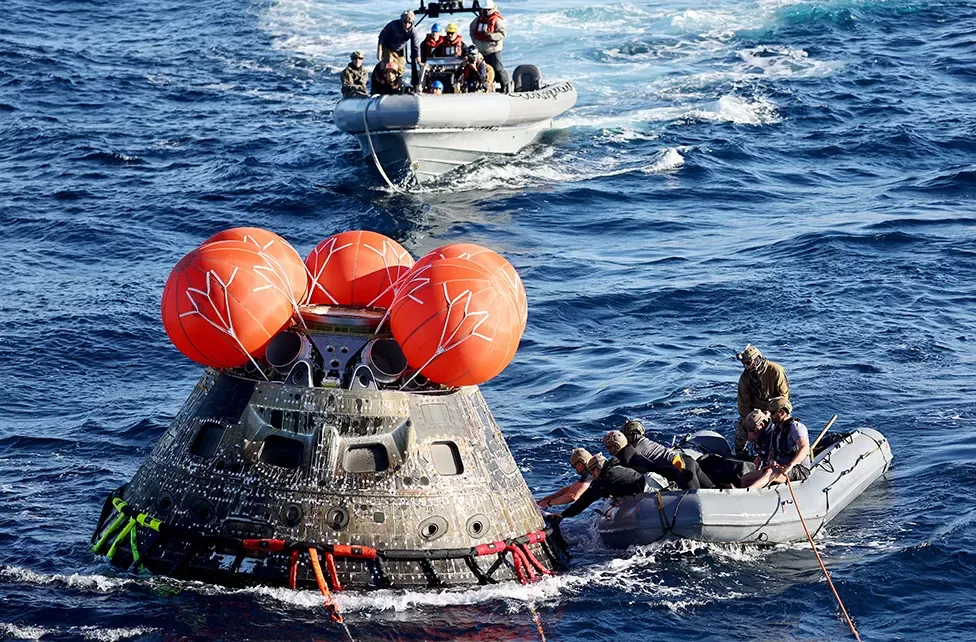NASA's Orion Capsule Returns Safely to Earth
NASA brought home its Orion capsule astronaut craft on Sunday after a nearly 26-day mission to orbit the Moon. It landed in the Pacific Ocean after a fiery re-entry into Earth's atmosphere and descent by parachute.

Facts
- NASA brought home its Orion capsule astronaut craft on Sunday after a nearly 26-day mission to orbit the Moon. It landed in the Pacific Ocean after a fiery re-entry into Earth's atmosphere and descent by parachute.
- The gumdrop-shaped capsule, carrying a simulated crew of three mannequins wired with sensors, plunged into the ocean off the Baja, Calif. peninsula. It was a major step forward to America's return to lunar exploration and eventual human missions to Mars.
- Thirty minutes before reentry, the capsule separated from its service module as it plunged into Earth's atmosphere — withstanding blazing temperatures of up to 5,000°F (2,760° C).
- Orion reached its farthest distance from Earth on its test flight that intentionally stressed systems to prepare for eventual human spaceflight. It journeyed more than 270K miles from Earth to the Moon and back and traveled more than 1K times farther than where the International Space Station orbits Earth.
- Performing better than expected, Orion captured stunning pictures of Earth, including a mesmerizing "Earthrise," and took two close flybys of the lunar surface. NASA Administrator Bill Nelson said he would grade the mission an A, adding, "Not an A-plus, simply because we expect things to go wrong."
- Orion’s safe return to Earth marks the end of this mission and NASA's transition to preparing for Artemis II — a manned lunar mission that could launch as soon as 2024. A lunar landing could take place in either 2025 or 2026 and mark the first time astronauts have been on the Moon since 1972.
Sources: BBC News, Al Jazeera, Reuters, Nasa, CNN, and New York Post.
Narratives
- Narrative A, as provided by Wired. Eventually, NASA will return astronauts to the moon for the first time since 1972, including the first female crew member. As part of a long-term plan for a Moon-to-Mars exploration in the next 20 years, the Artemis project is an exciting test to see how close humanity is to reaching much further than the Moon in the decades to come. This is an exciting step in the evolution of the US space program.
- Narrative B, as provided by Politico. This is an exciting development, but there are serious management problems in NASA's lunar program. Despite the long-term plan for the Artemis program this decade, only now is NASA creating a single management structure to handle the entire operation. Time will tell if this will have an adverse impact on the goal to land humans on the moon in 2025. The clock is ticking.






